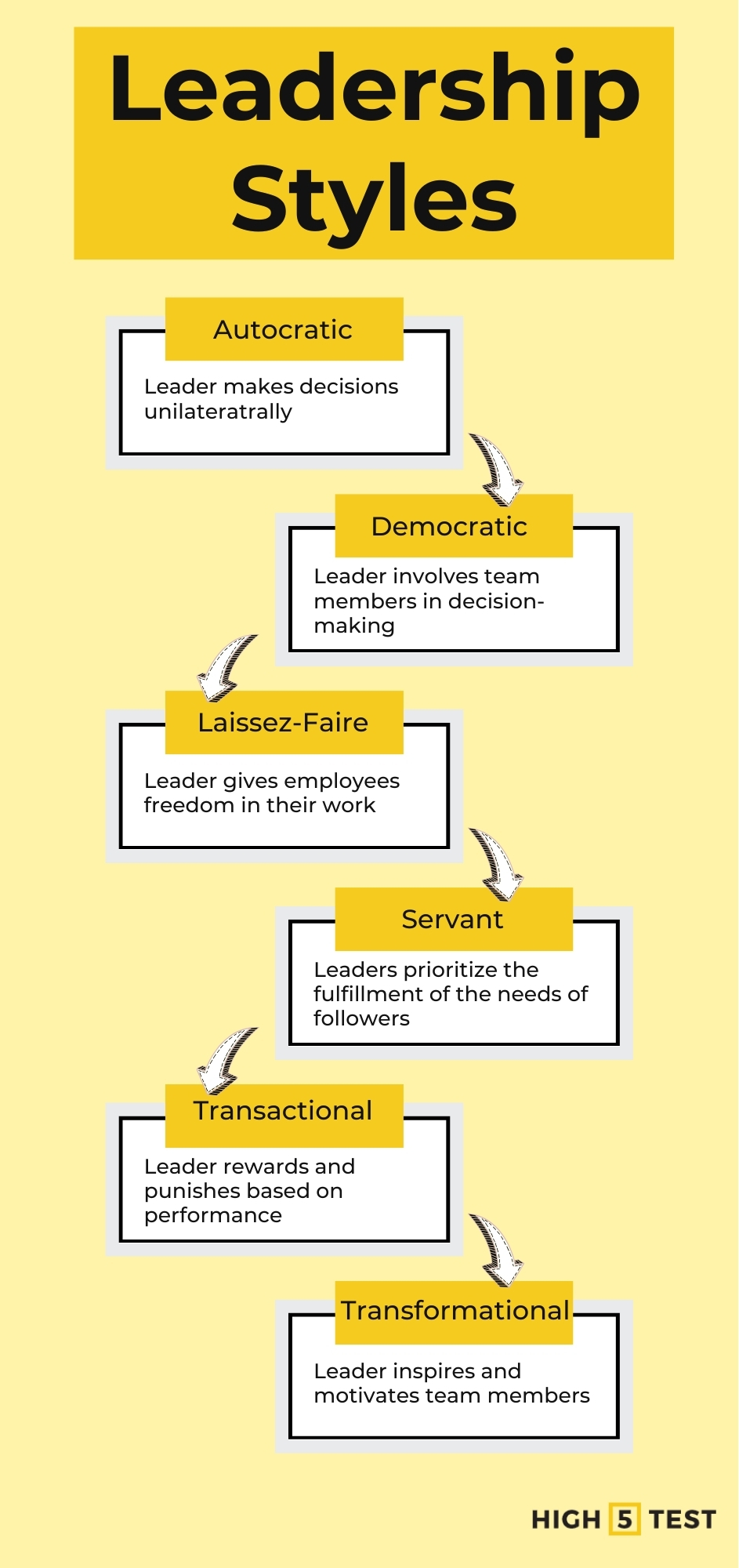Effective leadership style is not a fixed trait. It’s a skill that develops with time and consistent effort. In fact, many talented professionals hit a ceiling in their careers because they lack the right leadership style. The idea of the “born leader” no longer holds. Experts stress that leadership is an art perfected over time through continuous learning. With the right mindset, anyone can grow into an effective leader. This guide walks you through practical steps to help you self-assess, try new approaches, gather feedback, and align your style with your team’s strengths.

What is a leadership style (and what it’s not)
Your leadership style is the repeatable way you influence, decide, and communicate to deliver results through others. It isn’t a rigid label or a personality box. Modern leadership is strengths-led and adaptive: you lead from what you do best, then flex based on context and team needs.
Myths to drop
- “I have one fixed style.” In reality, you’ll have a home base (your strengths) and learned adjacent behaviors for different situations.
- “Style is about charisma.” It’s about reliable behaviors that create clarity, momentum, and trust.
Why Your Leadership Style Matters
- Clarity: Teams know how you decide, escalate, and prioritize.
- Engagement: People feel seen when you lead from authentic strengths and adapt to their needs.
- Speed & quality of decisions: Consistent processes reduce friction.
- Change outcomes: Adaptive leaders handle ambiguity without sacrificing trust.
12 steps to develop your leadership style and skills
You don’t need a new personality to lead, just a better playbook. Follow these 12 steps to build an authentic leadership style that fits you, serves your team, and scales with your career.
Your 30-60-90 Plan (Quick Reference)
- Days 0–30: Steps 1–5 + start Step 7.
- Days 31–60: Steps 6–9; ship your Decision & Delegation one-pagers.
- Days 61–90: Step 10 scorecard, Step 11 user manual, Step 12 learning loop.
Step 1: Write your leadership plan
Goal: Define the kind of leader you want to be and how you’ll be measured.
Action (15–20 min):
- Draft 3 statements:
- Vision: “I lead to…”
- Values: “Non-negotiables I’ll model are…”
- Impact metrics: “In 90 days, success looks like…” (e.g., team eNPS +10, cycle time −15%, 1:1 satisfaction 4.5/5).
Output: A 1-page thesis to revisit monthly.
Step 2: Identify Your Strengths
Goal: Know your natural tendencies and lead from what already works.
Action (30–40 min):
- Journal 3 energizers and three drainers from the past month.
- Ask three colleagues: “When am I at my best? What’s one habit that holds me back?”
- Capture patterns into a strengths/risks list.
Pro tip: Plan to validate your view with team data in Step 6.
Step 3: Map Your Context and Stakeholders
Goal: Adapt your style to the work and the people.
Action (20–30 min):
- List the top 6 stakeholders (manager, peers, direct reports, key partners).
- For each, note goals, preferred comms, trust level (1–5), and decision style.
- Identify two relationships to strengthen this month intentionally.
Output: Simple stakeholder map + two focus relationships.
Step 4: Choose Your “Style Mix”
Goal: Choose 1–2 default styles you’ll lead with, plus one stretch style for tough moments.
Cheat sheet (fast definitions):
- Democratic/Participative: Co-creates solutions; great for engagement/innovation.
- Transformational: Vision-first; great for change and growth.
- Servant: People-first; great for capability building and trust.
- Transactional: Clarity & incentives; great for execution and consistency.
- Autocratic (use sparingly): Crisis/urgent decisions.
Action (10 min):
- Write: “My default is _____ because…; my stretch is _____ for situations like _____.”
Step 5: Design 30-Day Micro-Experiments
Goal: Test your leadership style through small, visible actions.
Action (20–30 min):
- Choose three behavior experiments (one per week + one buffer). Examples:
- “In sprint planning, I’ll ask 3 open questions before offering an opinion.”
- “Delegate X project using clear outcomes, guardrails, and check-ins.”
- “End 1:1s with: ‘What’s one thing I could do better as your manager?’”
- Set tiny success metrics (e.g., % of meetings where you asked before telling).
Output: A 30-day experiment plan.
Step 6: Get Objective Team Data
Goal: Match your leadership style to your team’s strengths.
Action (60–90 min total):
- Have the team complete the HIGH5 Personality Test for Team Building.
- Visualize the group with HIGH5 Team Analytics (Strengths Grid, Culture Map, blind spots).
What to look for:
- Are we over-indexed on action vs. people, ideas vs. detail?
- Who are the natural facilitators, finishers, bridge-builders?
- Where might my style over- or under-serve this mix?
Output: Team strengths snapshot + 2–3 style adjustments you’ll make.
Step 7: Install Simple Communication Rituals
Goal: Make your style feel fresh every week.
Action (30 min to set up):
- 1:1 template (bi-weekly, 30–45 min): Wins → Roadblocks → Decisions → Development → “One ask of me?”
- Team cadence: Weekly 30-minute stand-up (priorities, decisions, risks).
- Office hours: 60 min/week open slot for coaching/questions.
- Track: on-time 1:1s, agenda usage, team clarity metrics
Step 8: Improve Delegation and Coaching
Goal: Build capability while scaling output.
Action (45–60 min):
- Delegate two projects with clear outcomes, guardrails, and support.
- Use GROW in coaching chats: Goal → Reality → Options → Will.
- Track: fewer urgent pings, increased autonomy, more predictable delivery.
Step 9: Clarify decision-making and autonomy
Goal: Reduce confusion and increase momentum.
Action (30–45 min):
- Choose a simple framework (RACI or DACI) for recurring decisions.
- Publish “guardrails” (budget/time/quality thresholds) where the team can self-decide.
Output: A one-pager “How We Decide Here.”
Step 10: Track results
Goal: Measure the impact of your leadership changes.
Set 90-day scorecard:
- People: eNPS, 1:1 satisfaction, retention risk, growth plans in place.
- Delivery: Cycle time, on-time delivery, quality/defect rate.
- Collaboration: Cross-team SLA hits, meeting effectiveness rating.
- You: % experiments completed, feedback frequency, energy levels.
- Rhythm: 15-min weekly review + 60-min monthly “Style Retro.”
Step 11: Write your “Leadership user manual”
Goal: Help others understand how to work with you.
Action (30–45 min):
- Publish a 1-pager covering:
- How you make decisions and communicate
- What you expect and value
- How to give you feedback
- Your commitments to the team (availability, growth, fairness)
- Share it with your team and invite input.
Step 12: Keep the flywheel turning (Learn and Level Up)
Goal: Sustain growth without burning out.
Action (ongoing):
- Rerun team strengths tests quarterly to spot shifts and risks.
- Rotate a stretch style each quarter (e.g., deepen Servant → Transformational).
- Join a peer circle or get a coach; book one formal skills sprint per quarter.
Starting with leadership self-assessment and self-awareness
Understanding yourself is the first step. Reflect on your personality, values, and natural tendencies. Research on emotional intelligence emphasizes self-awareness as the foundation of leadership. Leaders with strong self-awareness adjust their behavior in ways that increase trust and collaboration.
Personality tests
Structured tools (like DISC, MBTI, or a strengths-based survey) help you identify your inherent style. The HIGH5 leadership test gives you a personalized profile of your core leadership competencies, strengths and areas for improvement. This objective feedback highlights what energizes you and where you have blind spots.
Journaling and reflection
Write down challenging leadership situations you’ve faced. Note how you reacted and what you could do differently. Regular reflection helps you spot patterns in your behavior.
Solicit feedback
Ask colleagues, mentors, or team members for honest feedback on your leadership. As Park University notes, requesting constructive feedback can reveal blind spots and areas requiring attention. A 360° review or simple one-on-one conversations can show how others perceive your style.
Define your vision and values
Clarify what success means to you and the impact you want to have. Having clear goals and values will guide which leadership qualities to emphasize.
Explore and experiment with different leadership styles
No one style fits every situation. Modern organizations value flexibility. Today’s effective leaders listen with open ears, give team members autonomy, and connect with people rather than just issuing orders.
To refine your style, learn the common leadership approaches. Here are several well-known leadership styles and how they differ:

1. Autocratic (Authoritarian)
High-control, top-down leadership. Decisions are made unilaterally. Atlassian quips this “boss-is-boss” style belongs more in a mobster movie than in the modern workplace.
It tends to produce stress and turnover, since teams under autocratic bosses find themselves looking for new jobs before long. Use this style sparingly (e.g., in a crisis), and be prepared to soften it quickly.
2. Democratic (Participative)
Collaborative approach. The leader involves team members in decisions and problem-solving. Democratic leaders actively participate in discussions, but also make sure to listen to the views of others.
This style builds engagement and buy-in, though it can slow down decision-making if misused. Use it when creativity and consensus-building are more important than speed.
3. Laissez-Faire (Hands-Off)
Minimal oversight. The leader delegates almost all decision-making to team members. According to leadership experts, this approach is effective only when the team is highly skilled and motivated.
This style allows complete freedom, but if your team lacks direction, projects will stall. Try it with a mature, self-driven team; otherwise, provide more structure.
4. Servant
The leader’s focus is on serving and empowering the team. Servant leaders often possess a “serve-first mindset”, prioritizing team needs and growth.
These leaders effectively let employees steer the ship while they provide support. This style builds strong loyalty and capability. Use it to nurture high-potential teams.
5. Transactional
Based on rewards and penalties. Goals and performance reviews define success. In stable, routine work environments, this style can be effective. Employees are motivated by clear incentives. It is popular in corporate cultures because it yields measurable productivity. However, it can feel mechanistic during periods of change or innovation.
6. Transformational
Inspires the team with a vision. Transformational leaders focus on big-picture change rather than micromanaging. They act as role models and motivate employees to exceed expectations. Unlike transactional styles, they depend much more on acting as a source of inspiration, as people adapt to new challenges. Use this style when you need to lead an organization through change or growth.
Think of these styles as tools in your toolbox rather than fixed categories. An inspiring, transformational leader might still need to use transactional rewards to meet short-term goals, or step in autocratically to navigate a crisis. The key is flexibility. As Atlassian advises, don’t cling to one approach as the only way – “ease the heck up”, give people autonomy, and adapt to the situation.
Seeking feedback, practice, and iterate
Leadership style grows through deliberate practice. After you’ve understood different approaches, start experimenting with new behaviors and monitor the results.
- Try New Behaviors: If you usually give orders, try asking more questions. If you’re very hands-off, set a check-in to guide the team. For example, start a team meeting by asking for ideas rather than issuing directives. Small experiments (e.g., delegating instead of micromanaging one day) can reveal what resonates with your team.
- Gather Feedback Continuously: Maintain an open feedback loop. Use 360° surveys or simply ask your team, “How can I support you better?” The HIGH5 leadership test and similar tools offer “objective feedback on your leadership style and performance”. This objective insight helps you spot blind spots.
- Embrace a Growth Mindset: View setbacks as learning opportunities. As one leader wrote, treating failures as chances to improve will take your “army of people in a new, positive direction.” Reflect on what didn’t work, adjust, and try again.
- Learn Actively: Read books, attend workshops, or work with a coach. Model your behavior on leaders you admire. Many successful managers credit mentors and formal training for sharpening their leadership skills.
- Set Specific Goals: Define one or two skills to improve (e.g., “be more approachable” or “give clearer feedback”). Track your progress over time. Small, consistent improvements compound into a distinct style.
Remember: developing your style is an ongoing journey. Leadership is not an innate gift but an art perfected over time through continuous learning. Adopt that philosophy, and don’t be afraid to challenge conventional wisdom.
For instance, a case study of “Peter Weaver” showed that a courageous leader who spoke up against groupthink ultimately succeeded where others stayed silent. The study concludes that great leaders find the courage to speak up even when they know others will disagree.
Align your leadership with team strengths
Your leadership style must align with your team’s dynamics. No leader exists in a vacuum – understanding your team’s makeup will make you more effective.
- Analyze Team Strengths: Use a strengths-based framework for your team. For example, HIGH5’s Team Strengths Report gives a clear view of each member’s contributions. It highlights how different talents complement one another and improve collaboration.
- Use Team Analytics: Powerful platforms like HIGH5 Team Analytics take this further. The Strengths Grid shows where your team performs well and how to balance talents. These platforms also flag overused strengths that may lead to burnout. For instance, if your team leans heavily toward action over people focus, you’ll know where to adjust your approach.
- Facilitate Open Discussion: Share the results with your team. Discussing strengths and weaknesses openly builds trust. One leader shared that taking the test together sparked better conversations and made it easier to support each other. HIGH5 even provides ready-to-use slide decks and exercises for this purpose.
- Tailor Your Approach: Use these insights in your daily leadership. If your team is creative, lean into democratic and transformational methods. If they are analytical, a more structured approach might work. Matching your style to team needs amplifies performance.
- Continuous Team Feedback: Regularly solicit your team’s input on your leadership. Encourage a culture of two-way feedback. Use pulse surveys or quick one-on-ones. This keeps your growth on track and shows your team that you value their perspective.
Focusing on strengths shifts your mindset. Instead of asking, “What’s wrong?” you begin asking, “How can we use what we do best?” Teams that align on strengths are shown to be more productive and engaged. In fact, research finds that organizations emphasizing employee strengths report significantly higher engagement and profitability. Use team insights and feedback loops to refine your leadership over time.
FAQ
How long does it take to develop a leadership style?
You’ll see signals within two weeks of focused behavior experiments; meaningful habit change compounds over 1–3 months.
Can I have more than one leadership style?
You’ll have a home base (strengths-led) and flex into adjacent styles for situations.
What if my team needs a style I’m not strong in?
Pair your strengths with processes or people (e.g., add a detail-oriented co-pilot) and practice targeted micro-habits.
How do I measure progress?
Track leading metrics (decision speed, % clear owners) and lagging outcomes (delivery, engagement, retention). Ask for short pulse feedback.
Conclusion
Leadership is a practice shaped by self-awareness, consistent feedback, and thoughtful action. Your style improves as you learn and adjust. Use assessments, reflection, and real team input to refine how you lead. Leadership isn’t about perfection. It’s about growth. Focus on building a style that brings out the best in others and in yourself.






